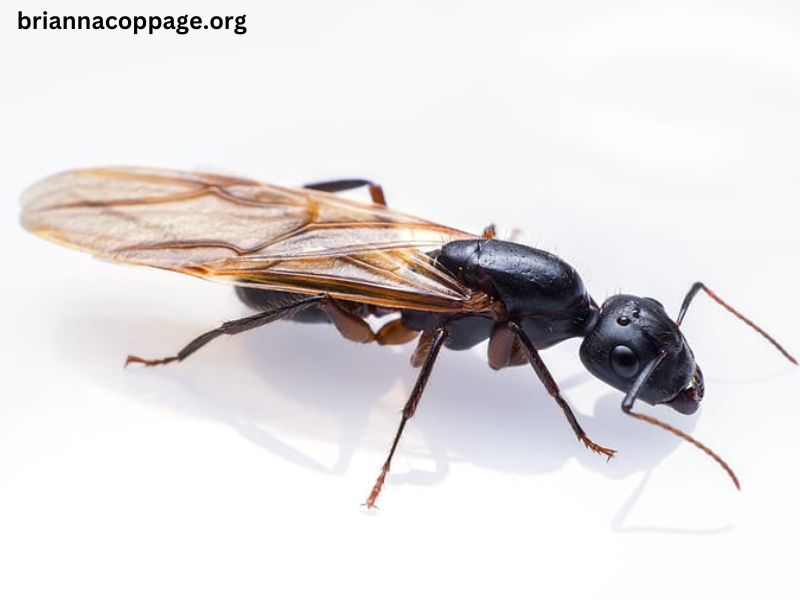Carpenter ants are among the most common pests that invade homes, particularly in wooded areas or places with high humidity. Unlike termites, which feed on wood, carpenter ants excavate wood to create their nests, leading to potential structural damage over time. If you find yourself dealing with these unwanted guests, it’s essential to take prompt action. This article will guide you through understanding carpenter ants, identifying infestations, prevention methods, and effective extermination techniques.
Understanding Carpenter Ants
What Are Carpenter Ants?
Carpenter ants (Camponotus spp.) are large black or bicolored ants that can measure between 1/4 to 1 inch long. They are known for their ability to hollow out wood to build nests, primarily in damp or decaying wood. Their presence is often a sign of moisture problems in your home.
Life Cycle
Carpenter ants undergo a complete metamorphosis: egg, larva, pupa, and adult. The queen lays eggs, which develop into worker ants, soldiers, and new queens. The worker ants are responsible for foraging for food, while the soldiers protect the colony. The entire life cycle can take anywhere from two months to several years, depending on environmental conditions.
Behavior and Habitat
Carpenter ants prefer to nest in moist, decaying wood, making areas like attics, basements, and around window frames ideal habitats. They are nocturnal foragers and can travel up to 100 yards from their nests in search of food. Carpenter ants feed on a variety of substances, including honeydew from aphids, sugary foods, and proteins like insects.
Identifying Carpenter Ant Infestations
Signs of Infestation
- Sawdust-like Material: One of the primary indicators of carpenter ant activity is the presence of frass, which looks like sawdust. This material is a byproduct of their nesting activities and may be found near their entry points or nesting sites.
- Rustling Noises: If you hear faint rustling sounds from within walls or ceilings, it may indicate the presence of ants.
- Visible Ants: Spotting large black ants or smaller bicolored ants inside or outside your home is a clear sign of an infestation.
- Hollow Sounding Wood: Tapping on wood surfaces may produce a hollow sound if they have excavated the area.
- Nesting Sites: Look for nests in damp wood, especially in areas where moisture accumulates, like leaky roofs or around windows.
Prevention Methods
1. Reduce Moisture
Since carpenter ants are attracted to damp environments, it’s crucial to address any moisture issues in your home. Here are a few steps to take:
- Fix Leaks: Repair any plumbing or roofing leaks.
- Improve Drainage: Ensure proper drainage around your home to prevent water accumulation.
- Ventilation: Use dehumidifiers in damp areas and ensure proper ventilation in attics and basements.
2. Seal Entry Points
Carpenter ants can enter through tiny cracks and crevices. Inspect your home for gaps and seal them with caulk or foam insulation. Pay particular attention to areas around windows, doors, and utility entry points.
3. Remove Food Sources
Keep food sealed in airtight containers and clean up any spills or crumbs promptly. Store firewood away from your home and remove any decaying plant matter from your yard.
4. Trim Vegetation
Keep shrubs and trees trimmed away from your home. Carpenter ants often use branches as bridges to access your roof or siding.
Extermination Techniques
If you’ve identified an infestation, it’s time to take action. Here are several methods to eliminate carpenter ants effectively.
1. Boric Acid
Boric acid is a common and effective method for killing carpenter ants. It acts as a stomach poison when ingested. To use boric acid:
- Mix equal parts of boric acid, sugar, and water to create a bait solution.
- Place the bait in shallow containers near ant trails and suspected nesting sites.
- The ants will carry the bait back to the nest, where it will eventually kill the colony.
2. Insecticide Sprays
Over-the-counter insecticide sprays can be effective for immediate relief. Look for sprays labeled for use against carpenter ants. Follow the manufacturer’s instructions carefully and apply them to nests, entry points, and along ant trails.
3. Ant Baits
Commercial ant baits are specifically designed to attract and poison carpenter ants. These baits often contain slow-acting insecticides, allowing ants to carry the bait back to the nest. This method can effectively eliminate the entire colony over time.
4. Professional Extermination
If the infestation is extensive, or if you prefer not to handle pesticides yourself, hiring a professional pest control service is advisable. They have access to stronger treatments and can provide a comprehensive inspection to identify and address the source of the problem.
DIY Removal Techniques
If you prefer to take a more hands-on approach, there are several DIY methods to consider:
1. Diatomaceous Earth
Diatomaceous earth is a natural powder made from fossilized algae. It works by damaging the exoskeletons of insects, leading to dehydration. To use:
- Sprinkle food-grade diatomaceous earth around suspected nesting sites and along ant trails.
- Reapply after rain or high humidity.
2. Vinegar Solution
A vinegar solution can disrupt the pheromone trails that ants use to navigate. Mix equal parts water and vinegar in a spray bottle and spray it directly on the ants and their entry points.
3. Soap and Water
A simple mixture of soap and water can also be effective. Spray the solution directly onto ants to suffocate them, and apply it to areas where they are entering your home.
Monitoring and Follow-Up
Once you’ve taken steps to eliminate carpenter ants, it’s important to monitor the situation closely. Check bait stations regularly and look for signs of continued activity. If you notice any resurgence, consider reapplying treatments or contacting a professional for further assistance.
Ongoing Prevention
To prevent future infestations, maintain the preventive measures discussed earlier. Regularly inspect your home for moisture issues, seal any new gaps, and keep your yard tidy.
Conclusion
Dealing with carpenter ants can be a daunting task, but with the right knowledge and tools, you can effectively eliminate these pests from your home. Remember to identify the signs of infestation early, address moisture problems, and use both preventive and extermination techniques to safeguard your living space. Whether you choose DIY methods or professional assistance, taking prompt action will help protect your home from the damage that carpenter ants can cause.






